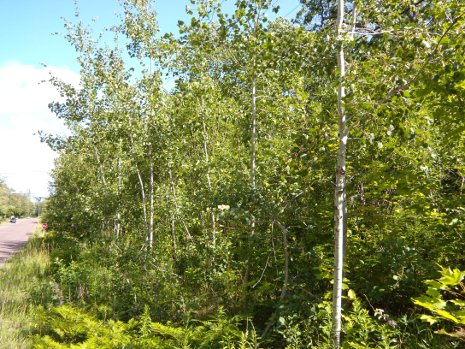 Poplar tree is commonly known as aspen and cottonwood. It can grow anywhere between 15 to 50 meters tall with trunks up to 2.5 meters in diameter. It grow well in low-nitrogen soil. It is used as an energy crop for biomass or bio-fuel, in energy forestry systems.
Poplar tree is commonly known as aspen and cottonwood. It can grow anywhere between 15 to 50 meters tall with trunks up to 2.5 meters in diameter. It grow well in low-nitrogen soil. It is used as an energy crop for biomass or bio-fuel, in energy forestry systems.Nitrogen is considered the most important component for supporting plant growth. Nitrogen is widely used as an agricultural fertilizer which affects root growth in plants. The scientists always wanted to grow more nitrogen-efficient plants, so less nitrogen could be used as fertilizer. But first they had to unlock the secret to the genetic mechanisms underlying plant root growth.
Three scientists from Michigan Technological University have identified a network of genes that cause poplar roots to grow well in low-nitrogen soil. This makes them ideal candidates for biofuel tree plantations on marginal lands.
The research was conducted by Hairong Wei, Yordan Yordanov and Victor Busov, and was published by the international journal New Phytologist.
The first species of poplar tree to have its full DNA code in the year of 2006.There are tens of thousands of genes in the poplar genome. It was a big task for them to determine which genes are doing what, how they affect each other and how they work together to regulate root growth under low nitrogen conditions.
In their laboratory they planted poplar seedlings under normal nitrogen levels. Then they transplanted them to a medium that contained almost no nitrogen. they find that the roots got larger and longer. The scientists did a series of experiments over time under the same experimental conditions, to identify the genes involved in the changes they observed. They found 9.198 genes that produced significantly different amounts or kinds of proteins at six different times. Further analysis closed in on a gene called PtaNAC1.
when they tweak PtaNAC1 the entire network responds, and the roots grow 58 percent more than controls. They compared the functioning of genes together with a functioning of a machine in which, there is a master switch that turns on the engine and the engine activates other switches that make all the little cogs and gears in the machine do what they are supposed to do.
Now that the scientists understand the poplar's genetic "engine," they can work to develop new varieties of plants that can thrive on marginal lands.
Now that the scientists understand the poplar's genetic "engine," they can work to develop new varieties of plants that can thrive on marginal lands.
No comments:
Post a Comment